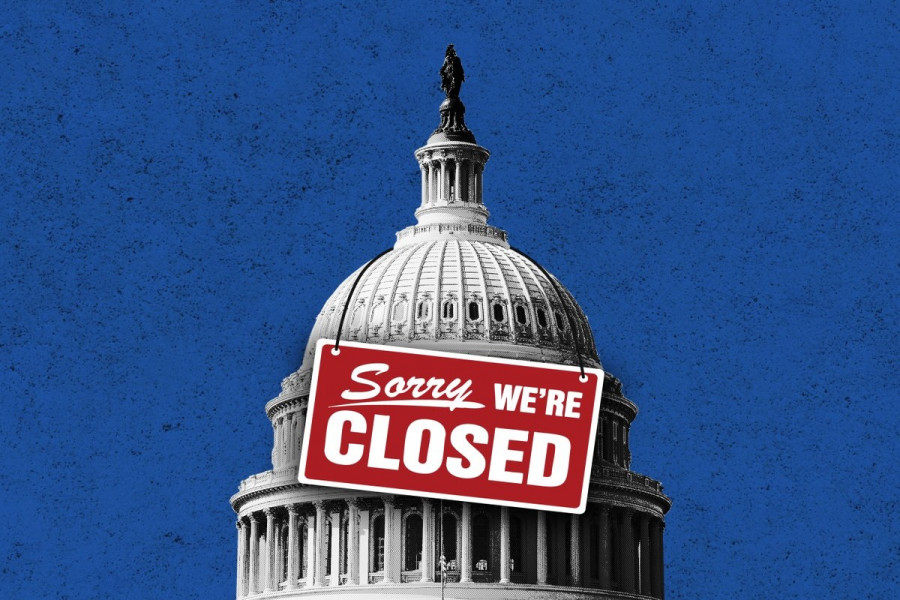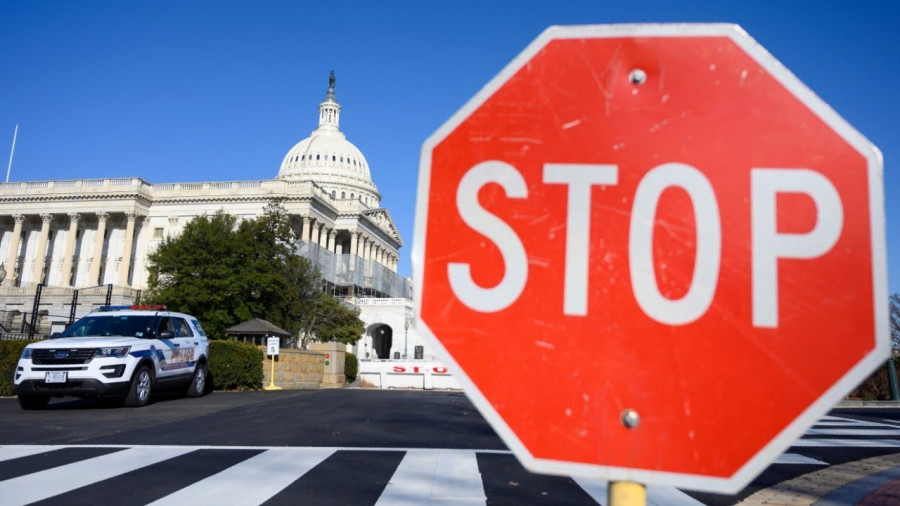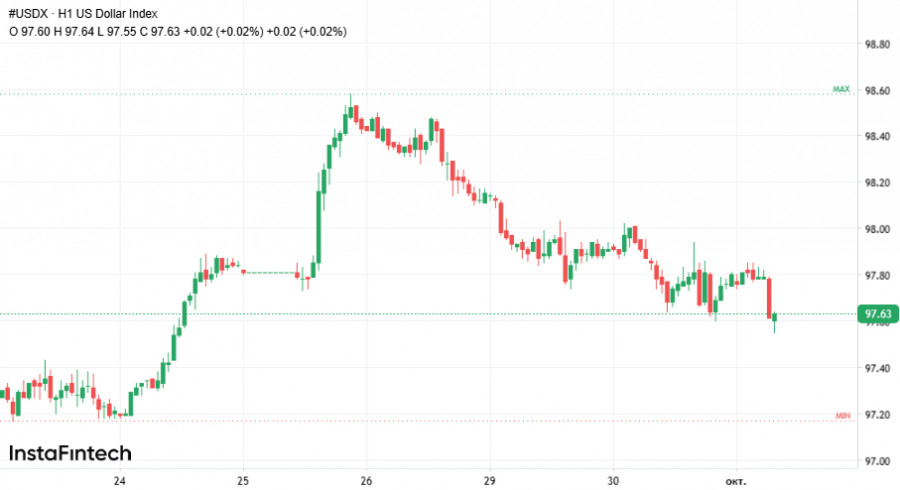A shutdown has begun in the United States: Congress failed to reach a budget agreement, resulting in the first federal government closure in seven years. The political deadlock over healthcare spending. A shutdown has begun in the United States: Congress failed to reach a budget agreement, causing the federal government to begin winding down operations for the first time in seven years. The political impasse over healthcare spending and other priorities has triggered the suspension of several government services and preparations for mass furloughs and layoffs, alarming both businesses and markets. This article provides an analysis of the economic fallout, as well as expert commentary and forecasts regarding the crisis's further development.
What Happened: the timeline of the shutdown and congressional disputes
The US budget crisis erupted amid a fierce standoff between Republicans and Democrats in Congress over key federal spending parameters—primarily healthcare.
The deadline for passing temporary government funding expired at midnight, with no compromise in sight. According to sources, the Senate voted 55 to 45 against a short-term budget bill, falling short of the 60 votes required to advance the measure.
Approval from the Republican-controlled House of Representatives was also lacking; the House did not even hold a night session, rendering any last-minute settlement impossible.
As a result, starting Wednesday, US federal agencies officially began partial shutdown procedures. The White House Office of Management and Budget instructed federal agencies to move forward with plans to suspend all non-essential functions.
This means the suspension of numerous government services and placing hundreds of thousands of employees on hold, including scientific institutions, customer support services, and administrative departments. Disruptions are expected in the Small Business Administration's loan programs, as well as in notifications and reports prepared by various ministries.
The root of the deadlock is the fundamental disagreement between the two parties. Democrats insisted on expanding government healthcare support programs, maintaining them, and extending federal subsidies set to expire at the end of the year.
Republicans, on the other hand, demanded that healthcare issues be considered separately from the budget and insisted on passing a "clean" funding bill without extra social obligations. The negotiations quickly reached a stalemate.
"They need to release the hostage," said Senate Majority Whip John Thune, blaming the opposition for the lack of compromise. Democrats, in turn, pressured their leader Chuck Schumer to use the rare shutdown leverage to fight for their priorities.
For his part, Schumer stated: "He (Trump) is using Americans as pawns," placing responsibility on the administration for the potential fallout from mass federal employee furloughs.
US President Donald Trump publicly supported the hardline approach and, according to sources, only added to the uncertainty and conflict. He specifically warned Democrats that the shutdown would allow his administration to take "irreversible" steps, including the threat of mass layoffs of federal employees and the rolling back of Democrat-backed programs. "We will lay off a lot of people," Trump said, noting that the cuts would mainly affect employees associated with opposition policies.
Official government employee communities and several agencies informed staff about possible unpaid furloughs, and two major labor unions have even filed lawsuits to block mass furloughs in order to protect public sector workers' rights.
Thus, the shutdown was declared official: government agencies began to suspend work in areas not supported by legislation, and key services shifted to emergency mode. Only the "most essential" sectors—military, law enforcement, national security—continue to operate, and even then, salaries will only be paid after the crisis ends.
This is the third shutdown during Donald Trump's presidency and the first in seven years. The economic scope of the overdue budget is nearly $1.7 trillion, or a quarter of all federal spending, which makes this one of the most significant crises for the American economy and government management in recent decades.
The impact of the shutdown on the economy and markets
The effects of the shutdown on the economy and financial markets were felt within hours of the crisis's onset. The federal government stops performing a substantial range of functions—from statistical and regulatory activities to business support and licensing.
Markets and investors are reacting nervously to the growing uncertainty, while economists see both immediate and long-term risks to economic dynamics.
At the very start of the shutdown, futures on key exchange indices such as the S&P 500 and Nasdaq 100 fell by 0.5%, while gold hit historic highs, signaling rising demand for safe-haven assets.
As strategist Sarah Bianchi writes: "At the moment, we believe the stoppage is most likely to be relatively short-lived, lasting one to two weeks. We don't see serious macroeconomic fallout if the shutdown lasts less than a few weeks, similar to all prior shutdowns." Nonetheless, fears of a prolonged deadlock persist. Experts stress that due to the suspension of government agencies, key macroeconomic reports will not be published on time—especially nonfarm payroll data, which the market traditionally sees as pivotal for the Fed's interest rate decisions.
"If we didn't receive the data, we wouldn't get the jobs report—moreover, we wouldn't get the inflation report," comments market analyst Hebe Chen. "I think that would definitely become a real risk. At this stage, the market has yet to fully price in this risk."
An information vacuum, a lack of transparency on the labor market and inflation, and possible delays in major data releases are setting the stage for increased volatility.
"The situation could worsen if the shutdown creates an information vacuum in jobs and inflation data ahead of the next Fed rate decision," emphasizes analyst Michael Bailey. "Given that equities and their valuations are near previous highs, we could see even small pieces of bad news snowball into a correction in the near term."
The global currency market is responding to the shutdown with a weaker dollar: the dollar index has dropped to a one-week low against the euro and yen. This is largely due to current uncertainty as well as anticipated weak or missing economic data.
"The US dollar will resume its decline today if the political discourse indicates a prolonged shutdown," notes Joseph Capurso, Head of Currency Research at Commonwealth Bank of Australia. "Weaker economic data from the US may put pressure on the dollar," he adds.
Some market strategists see that amid political uncertainty, investors are partially returning to classic safe-haven currencies—primarily the yen and the euro, which is reflected in their currency pairs.
Bloomberg Economics experts estimate that if the shutdown lasts more than two to three weeks, US unemployment could rise from 4.3% to 4.6–4.7% as temporarily furloughed staff are counted. In certain regions highly dependent on the federal sector, such as the Washington, D.C. metropolitan area, a local recession could begin.
At the same time, historical analysis shows that most direct economic losses tied to shutdowns are typically reversed once government resumes work. However, some damage is never recovered: according to the Congressional Budget Office, after the longest shutdown in 2018–2019, the US economy failed to recover $3 billion of the $11 billion in lost output.
Thus, the shutdown undermines confidence in US economic governance, increases volatility and uncertainty in financial markets, affects the dollar, and can lead to noticeable drawdowns within certain industries.
The main risk is the prolonged deadlock and information vacuum: the longer the shutdown lasts, the more its economic and market effects may turn persistent and negative.
Trader tactics: how to adapt to the US shutdown
In the face of an ongoing shutdown and growing market uncertainty, traders are advised to act as cautiously as possible, using a mix of defensive strategies and tactical flexibility.
Experts agree that in the coming days and weeks the market will remain highly volatile, especially given delayed key macroeconomic data and the risk of sudden changes in market sentiment.
Analysts recommend focusing on traditional safe-haven assets. Amid the shutdown, gold has already hit historic highs, confirming its role as a hedging tool during political and economic turmoil. Interest in gold may continue to rise if the information vacuum persists and the potential risks on inflation and jobs remain unresolved.
The currency market, in strategists' view, may offer additional opportunities: the yen and euro traditionally benefit when the dollar is weak and US political instability rises. "The Japanese yen and euro may become preferred pairs against the dollar," notes FX strategist Tatyana Darie. This approach implies cutting long dollar positions and pivoting to euro and yen cross-pairs as more stable alternatives.
At the same time, caution is warranted with US stocks, especially since high S&P 500 and Nasdaq 100 valuations make the market vulnerable even to short bouts of negative news. For derivatives traders, short-term trades with a focus on quick profits are advised: high volatility can produce brief moves, but positions should not be held without additional information on the budget crisis. Using stop-loss orders to limit potential losses in the event of a sharp reversal in markets is another recommended strategy.
Overall, the key advice is to maintain liquidity, diversify portfolios into safe-haven assets, and be very cautious with new investments until there's clarity around resolving the political deadlock and the return of key economic data releases.















